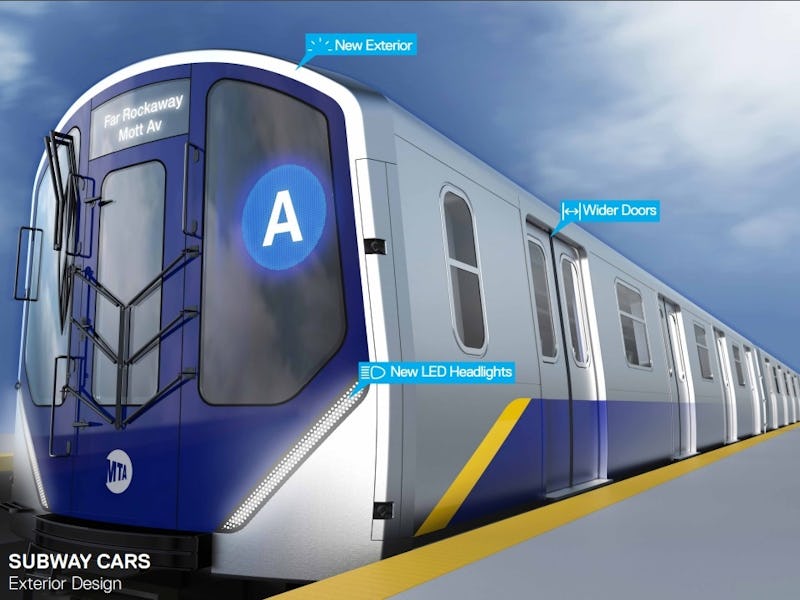7 Futuristic Changes Coming to New York City's Subway System
Space, technology, wifi, oh my.

New York City’s aging subway system is finally on its way to the 21st century. New York Governor Andrew Cuomo announced a $27 billion, five-year plan on Monday for improved subway cars and stations.
The improvements are a long time coming, because the city’s 100-year-old system simply wasn’t built to handle 5.7 million rides every weekday. A single malfunction can cause a cascade of delays across the entire subway line, and trains are late anywhere from 18 to 30 percent of the time.
“The MTA (Metropolitan Transit Authority) system itself was designed at a much, much different time, for a fraction of the number of people,” Cuomo said. “Literally a fraction. The basic system is all the same. The subway tubes are basically the same. The basic capacity is the same.”
The announcement was a detailed follow up to updates the MTA teased back in January.
New York will be using what Cuomo calls a “design-build” structure for the improvements. The back and forth of government takes too long, Cuomo said, and by the time any decisions are made everything is outdated. Instead, the state government is going to put an international bid out in late July and contract the work to whichever private company will do it for the cheapest, fastest.
In all, 31 of the 469 stations will be revamped, and 1,025 futuristic subway cars will be added. If you are familiar with the never ending underground construction in the city, you may be wondering how it will ever get done. The answer: six-month station closures. Deal with it.
So what will the largest amount of money ever spent on an MTA capital plan get the beleaguered residents and tourists in NYC? Quite a bit.
Don't know where to go? Floor arrows have you covered.
The train cars
Open end design
Up to 750 of the 1,025 new cars will have open gangways so people can walk between cars. This adds some extra room, as well as allows passengers to (in theory) evenly distribute. This will get rid of the illegal-to-pass-through open gangways that people use for the occasional bathroom break.
Fold up seats, that will most likely never be folded up.
Wider doors
Doors will go from 50 inches wide to 58 inches. That might not sound like much, but an MTA study found that those precious eight inches can get a train out of the station 32 percent faster.
Technology
In a true threat to work-life balance, passengers will have access to wifi and USB chargers. The latter is also a threat to safety, as proven by the passengers on the Staten Island Ferry who fought over a plug and proceeded to punch an MTA official in the face. It will also feature electronic displays and digital advertisements, so no more Sharpied-over local ads for the Museum of Sex and budget breast implants.
The MTA apparently has bold dreams of reducing crowds.
The stations
4. Cleaner design
Stations will ditch the dim yellow lights and add easy to clean floor tile. There will also be glass partitions rather than black-painted metal between people waiting for a train and people waiting to get in the waiting area.
Long live the glass partition.
3. Signs people can actually use
Digital signs with real-time updates will help people get from stop to stop, and the status of the trains will be shown before people pay their entrance fee only to get stuck waiting for a delayed train.
2. Technology
Expect count down clocks that remind us of our own mortality, better phone service, and free wifi. Not mentioned on Monday, but listed as in improvement earlier: phone payment system for fares.
1. History
The renovations will “consider the architectural legacy of each station.” Hopefully, despite all of the futuristic improvements, that means the stations will respect the hoverboard ban.